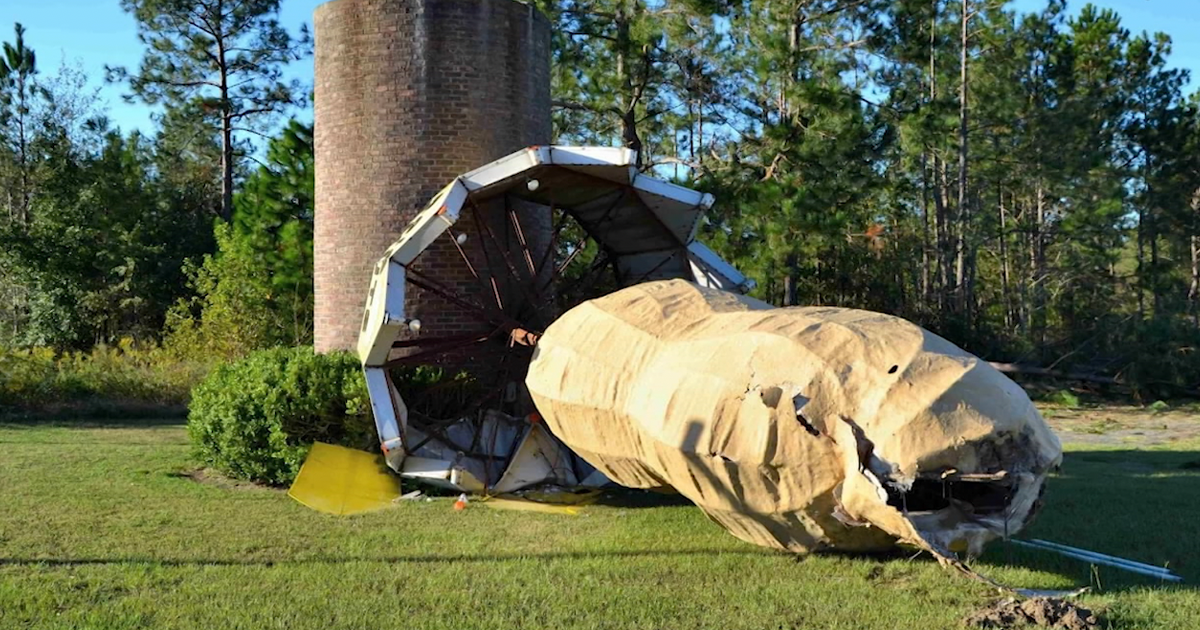Ashburn, GA
In the heart of Ashburn, Georgia, there once stood a monument. A monument that paid homage to Georgia’s Peanut Industry, and the people who grow them. A beloved landmark for locals, and for thousand’s who drove past it each day on the interstate traveling to and from their destinations. Dedicated in 1975, the giant peanut stood the test of time, and withered many storms. However, one storm it could not stand up to, Hurricane Michael.
“It was heartbreaking,” says Ashley Miller, Executive Director of the Ashburn-Turner County Chamber of Commerce. “The peanut represents Turner County. Everybody might not know where Ashburn is, but they know where that peanut is and they have for the past forty odd years. So, seeing it laying there, it was pretty bad, but there was so much going on at that time. We had a lot of people who lost their homes. A lot of our infrastructure was messed up. We were without power for a few weeks. So, to be honest, the peanut was definitely a concern, but making sure our people were taken care of was really the most important part.”
“It was mainly just a landmark. You know, we’d go to Tifton or would come through Ashburn, something like that. We’d see it and never really think a whole lot about it, but it ended up being something pretty big. You get used to seeing it like that, and then it’s not there. So, it’s a part missing,” says Cole Sercer, the Metal Fabricator restoring the peanut.
Amazing isn’t? How something made of steel and fiber glass meant so much to so many.
Since its demise, the people of Turner County and surrounding areas, have been yearning for the Peanuts’ restoration, and now their hopes, and in some cases, even prayers, have finally been answered.
“The Turner County young farmers had begun an effort before the hurricane to raise some funds to restore it because it was in need of restoration,” says Miller. “There was about, I want to say six-thousand dollars already in the cookie jar there for the restoration.”
Turns out, that cookie jar was a little small. Other contributions came pouring in, from Organizations like the Turner County Art’s Council, Ag Georgia Farm Credit, The Georgia Peanut Commission, and the Department of Ag, just to name a few. In total, those cookies, that dough, so to speak, totaled well over eighty five thousand dollars. Next step. assign someone the task of building the new peanut. Well look no further than Rebecca, Georgia, exactly thirteen-miles from where the old peanut once stood. It’s here, in this metal building where Cole Sercer, Jake Rice and Justin Dallas are currently fabricating their masterpiece. A newer, much improved peanut, that Cole Sercer calls an honor to be in charge of.
“There’s a bunch of people that it means more to them than you would know,” says Sercer. “Some of the boys from the county, they just contacted me one day, said, ‘hey!, You know, it’s down. It looks like you’re gonna be the lucky one to get to fix it.’ Well, we’re usually the ones that do stuff that nobody else wants to do or something that they’re not capable of. They just said, ‘look it over and see what you think, and let’s either fix what we can, or if it’s no good, let’s build all of it.”
So, it was decided that it would be rebuilt from scratch.
“We built everything from the crown, to the pole, to the peanut. You see a bunch of monuments and stuff like that where they kind of turned somebody loose. That’s pretty much what they did with us on this. We wanted to keep it as correct as we could, so we couldn’t go too crazy, but it was fun,” says Sercer.
“The point of the peanut is that it also represents agriculture and it represents farming, and it represents the economy here in the south,” says Miller. “Everything is touched by the peanut industry. You’d be hard pressed to find someone who works in Turner County that doesn’t have something tangent, doesn’t have a family member or whatever, that doesn’t work in the peanut industry.”
“It’ll be welded, completely sealed up, and airtight. So, we’re hoping it’ll go fifty more years, we aren’t going to have to worry about it anymore,” says Sercer.
By: Ray D’Alessio

